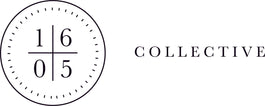The Importance of Drawing
Drawing is one of the oldest forms of human expression within the visual arts. It is generally concerned with the marking of lines and areas of tone onto paper/other material, where the accurate representation of the visual world is expressed upon a plane surface.
Traditional drawings were monochrome, or at least had little colour, while modern colored-pencil drawings may approach or cross a boundary between drawing and painting.
In Western terminology, drawing is distinct from painting, even though similar media often are employed in both tasks. Dry media, normally associated with drawing, such as chalk, may be used in pastel paintings. Drawing may be done with a liquid medium, applied with brushes or pens. Similar supports likewise can serve both: painting generally involves the application of liquid paint onto prepared canvas or panels, but sometimes an underdrawing is drawn first on that same support.

Drawing is used to express creativity, and therefore has been prominent in the world of art. Throughout much of history, drawing was regarded as the foundation for artistic practice.
Following the widespread availability of paper in the 14th century, the use of drawing in the arts increased. At this point, drawing was commonly used as a tool for thought and investigation, acting as a study medium whilst artists were preparing for their final pieces of work.
For instance, the Renaissance brought about a great sophistication in drawing techniques, enabling artists to represent things more realistically than before and revealing an interest in geometry and philosophy.
The invention of the first widely available form of photography led to a shift in the hierarchy of the arts. Photography offered an alternative to drawing as a method for accurately representing visual phenomena, and traditional drawing practice was given less emphasis as an essential skill for artists, particularly so in Western society.
Many famous painters were also drawers, like for example, Henri Matisse and Pierre-Auguste Renoir.

